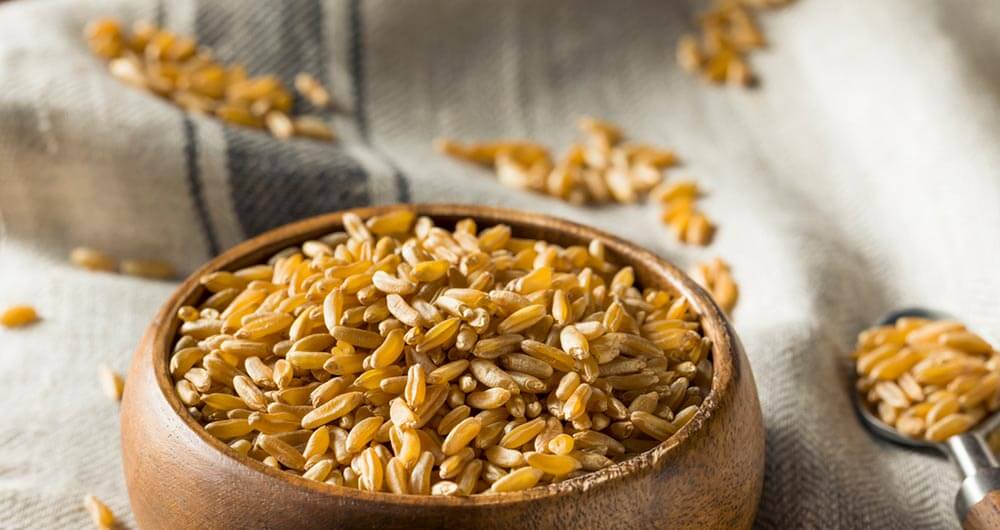Khorasan, also known as Kamut, is an ancient grain with a high protein content and rich flavour.

Khorasan, scientifically known as Triticum Turgidum Turanicum, is an ancient grain with roots tracing back to ancient Egypt. In the 1940s it found its way to the United States, capturing the attention of farmers in search of distinctive and nutritious crops.
Within Khorasan wheat, the trademarked name Kamut designates a specific variety known for its large kernels. Renowned for its rich, buttery flavour, Kamut has become a staple in kitchens, celebrated for its versatility.
Compared to modern wheat, Khorasan boasts higher protein content, making it an excellent choice for those prioritising a protein-rich diet. Beyond protein, Khorasan is a source of essential minerals such as selenium, zinc, and magnesium. Some individuals with gluten sensitivities report better tolerance to Khorasan compared to modern wheat.
Khorasan’s nutty and sweet taste lends itself to diverse culinary uses. From artisanal bread and hearty pasta to refreshing salads and flavourful pilafs, Khorasan brings a delightful nuance to a variety of recipes.
In the hands of organic farmers, Khorasan takes on a new significance. Cultivated with a deep appreciation for its long heritage, these farmers contribute to the preservation of ancient grain varieties. As people increasingly seek nutritious and unique alternatives to modern wheat, Khorasan’s popularity continues to soar.
For those interested in cultivating Khorasan, it thrives in well-drained soil and requires a sunny location. Planting in the autumn allows for winter growth, and the crop typically matures in early summer.
Join Edgeroi Organics as we preserve this nutrient-rich grain of our forefathers and continue Khorasan’s story of resilience, flavour, and nutritional richness. Follow Alex’s farming blogs for more technical farming information or reach out via our Contact page